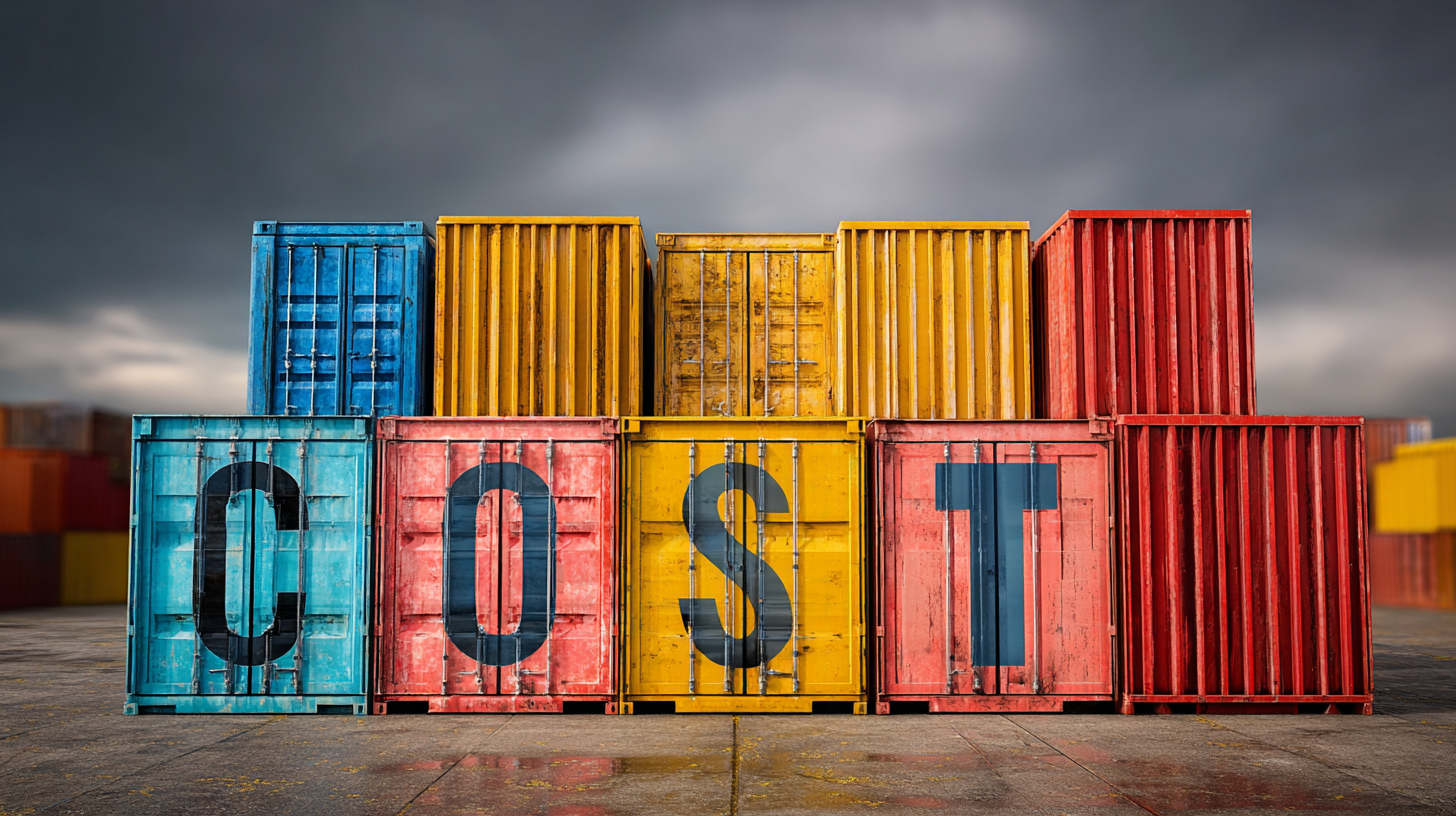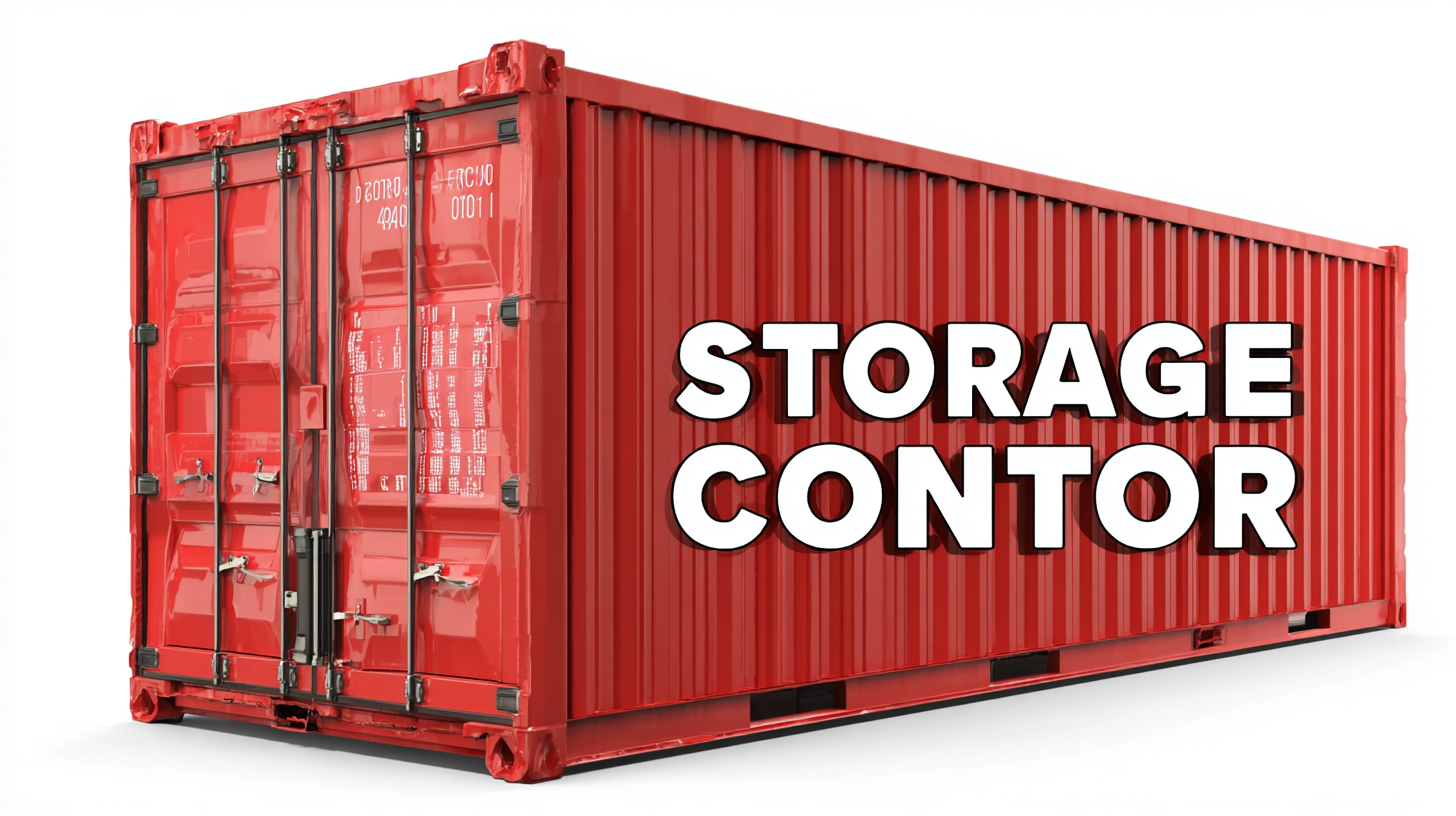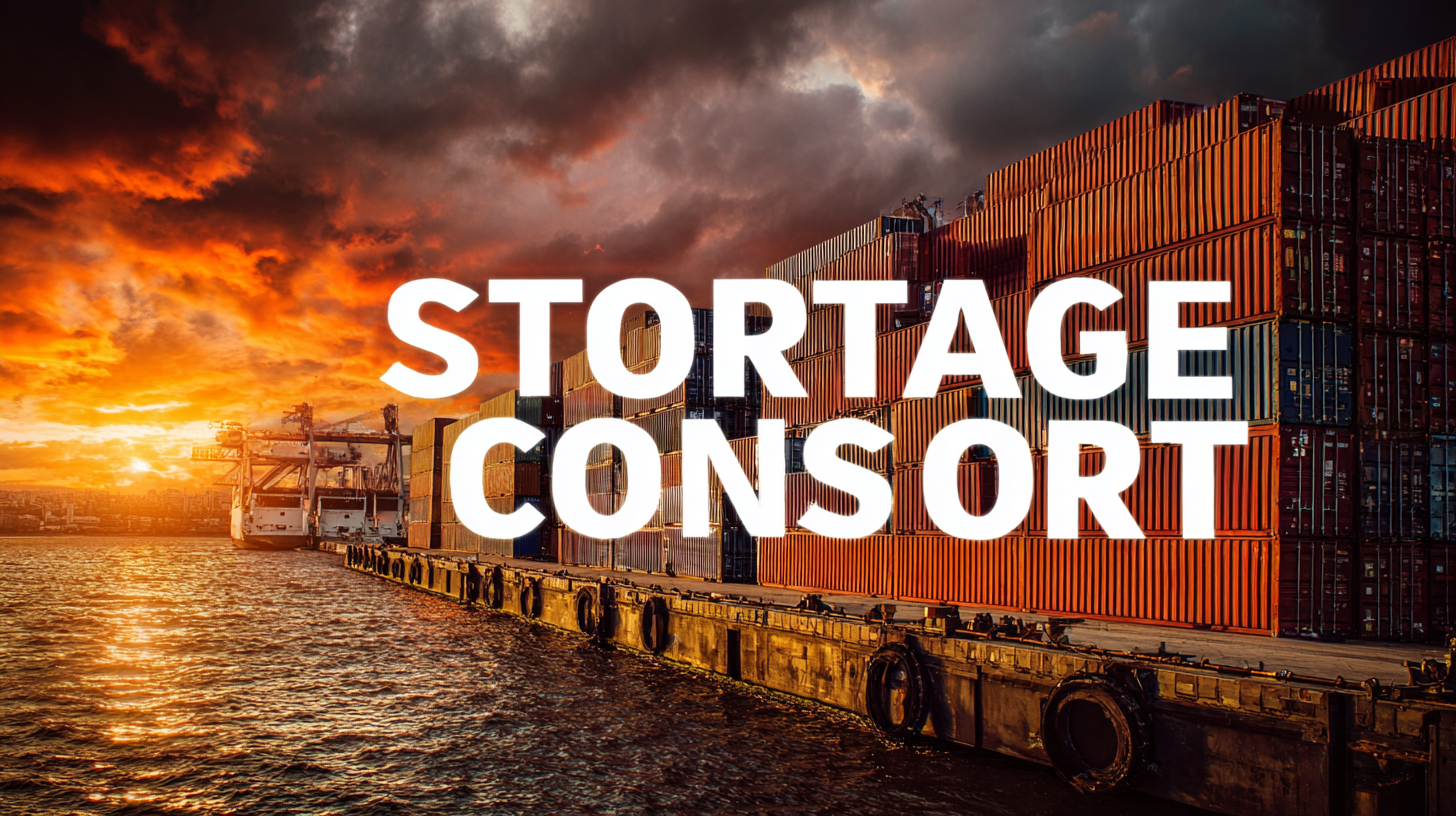In an era where efficient budget management is crucial for global buyers, understanding "Storage Container Cost" has become a key factor in strategic procurement. According to the latest market analysis by MarketsandMarkets, the global storage container market is projected to reach USD 11.94 billion by 2025, growing at a CAGR of 5.3%. This growth presents an opportunity for buyers to optimize their expenses through insightful cost comparisons and strategic sourcing decisions. With varying factors influencing pricing, such as material, size, and durability, this blog will explore the seven best insights into storage container costs, enabling buyers to make informed choices that maximize budget efficiency in an ever-evolving industry landscape. Emphasizing the importance of staying updated on market trends and cost structures, this guide aims to empower global buyers in their quest for cost-effective storage solutions.

When it comes to purchasing storage containers, understanding the key factors influencing their pricing is crucial for global buyers aiming to maximize budget efficiency. One significant factor is the material used in the construction of the container. For instance, steel containers tend to be more expensive due to their durability and resistance to weather conditions, while alternatives like plastic may offer a more cost-effective solution, albeit with limitations on strength and longevity.

Another critical factor is the geographical location and availability of containers. Shipping costs, tariffs, and regional demand can all affect pricing. In areas where containers are in high demand, prices may rise significantly. Additionally, the currency fluctuations and economic conditions of the countries involved can lead to price variability, making it vital for buyers to stay informed about global market trends and conduct thorough research before making a purchase.
Understanding these dynamics will allow buyers to make more informed decisions, ensuring they get the best value for their investment.
When exploring the market for storage containers, understanding the cost implications of various types is crucial for global buyers aiming to maximize budget efficiency. According to a recent report by ResearchAndMarkets, the global container market is projected to grow at a CAGR of 6.5% from 2021 to 2026, highlighting the increasing demand and competitive pricing across different container types. Traditional metal shipping containers remain the most economical choice, with prices ranging from $2,000 to $5,000 depending on size and condition. However, specialized containers such as refrigerated and tank containers can significantly increase expenditure, costing upwards of $10,000 and $20,000, respectively.

Additionally, the choice between new and used containers can profoundly impact costs. A study by IBISWorld reveals that purchasing used containers can save buyers up to 30-50% initially. However, maintenance and modifications on these containers may incur additional long-term costs. Buyers should not only consider the upfront price but also the potential lifecycle costs of maintaining the container. By carefully analyzing the different types and their associated costs, global buyers can make informed investments that align with their budgetary constraints while fulfilling their storage needs effectively.
The quality of materials used in storage container construction is a critical factor that significantly influences price variations in the market. According to a report by IBISWorld, the global storage container manufacturing industry generates over $18 billion in revenue annually, with material costs comprising roughly 60% of total production expenses. High-quality materials such as stainless steel, high-density polyethylene, and aluminum not only enhance durability and longevity but also impact the overall cost structure. For instance, a stainless steel storage container can range from 20% to 50% higher in price compared to standard options made from lower-quality plastic.
Moreover, the increasing demand for environmentally sustainable products has led manufacturers to adopt eco-friendly materials, which often come at a premium. The Global Greenhouse Gas Emissions Report indicates that sustainable storage solutions are projected to grow by 12% annually, pushing manufacturers to innovate while also adjusting pricing strategies accordingly. Buyers seeking to maximize budget efficiency should consider how material quality correlates with their specific storage needs, as investing in higher-quality containers can yield significant long-term savings through reduced replacement and repair costs.
When evaluating shipping and transportation costs, global buyers must consider various factors that influence the overall expenditure on storage containers. According to a report by Logistics Management, shipping costs have risen by approximately 20% due to ongoing supply chain disruptions and increased fuel prices. This highlights the importance of factoring in transportation costs when budgeting for storage solutions. By understanding these dynamics, buyers can make more informed decisions that contribute to better budget efficiency.
Tip: When sourcing storage containers, always seek multiple quotes from suppliers and transportation partners. This not only enhances your negotiating power but also allows you to compare service levels and delivery times, which can significantly impact your overall logistics costs. Additionally, consolidating shipments or considering alternative transport modes – such as rail or intermodal – can lead to significant savings.
Furthermore, analyzing freight trends is vital. The World Bank reports a continuous shift toward e-commerce, influencing demand patterns in logistics. Equipping yourself with real-time data regarding shipping rates and container availability can prove beneficial. By leveraging data analytics, buyers can optimize their shipping schedules, aligning them with peak demand periods to minimize costs.
Tip: Engage in collaborative logistics planning with suppliers to identify potential savings through shared transportation resources, which can result in lower per-unit costs and reduced environmental impact.
Negotiating better prices for storage containers is crucial for global buyers seeking to maximize budget efficiency. Understanding the dynamics of shipping costs is integral to this process. With shipping and logistics evolving rapidly, it's essential to implement strategies that can significantly reduce expenses without compromising quality. Utilizing practical tips, such as consolidating shipments and exploring different carriers, can help buyers achieve cost savings. Additionally, staying informed about market trends and fuel prices allows businesses to make educated decisions when negotiating rates.
Moreover, it's important to consider the broader economic climate, including factors such as tariffs and international trade agreements. The recent shifts in trade policies and tariffs can impact container pricing and availability, necessitating vigilance and adaptability. Leveraging tools like Porter's Five Forces model can help buyers assess the competitive landscape and enhance their negotiating power. By understanding both the logistics and market conditions, businesses can effectively negotiate better prices for storage containers, ultimately leading to improved budget efficiency and profitability.
Rob was always very honest and upfront about everything and took the time to explain everything I needed.
“highly recommended. They provided us with a great storage container with ontime services.”
“Bought a used container, its perfect, no leaks and in good condition.”
“Good service and prompt delivery. A great option for temporary storage at a decent price.”
Join our mailing list to get the latest storage container inventory and offers